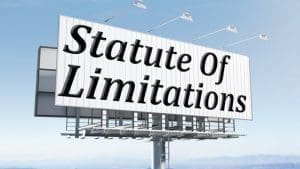How Businesses Can Reduce Onsite Risks
Running a business means juggling countless responsibilities, but workplace safety should never be compromised. Every year, thousands of employees suffer injuries that could have been prevented with proper risk management strategies. Whether you operate a manufacturing facility, retail store, or office building, creating a safer work environment protects your most valuable asset—your people—while also safeguarding your business from costly liability claims.
Workplace accidents don’t just impact individual employees. They can result in workers’ compensation claims, regulatory fines, productivity losses, and damage to your company’s reputation. The good news? Most onsite risks are entirely preventable when businesses take a proactive approach to safety management.
Conduct Regular Safety Audits
The foundation of any effective risk reduction strategy starts with understanding what hazards exist in your workplace. Schedule comprehensive safety audits at least quarterly, involving both management and employees who work directly in different areas of your facility.
During these audits, examine every aspect of your workplace environment. Check for slip and trip hazards like loose cables, wet floors, or uneven surfaces. Inspect equipment for proper maintenance and safety guards. Evaluate lighting conditions, emergency exits, and storage practices. Document everything you find and prioritize improvements based on potential severity and likelihood of occurrence.
Consider bringing in external safety consultants for an unbiased assessment. Fresh eyes often spot hazards that become invisible to people who see the same environment every day.
Implement Comprehensive Employee Training
Your safety protocols are only as effective as your team’s understanding of them. Develop training programs that go beyond basic compliance requirements and focus on practical, job-specific safety practices.
New employee orientation should include thorough safety training before anyone begins work. Ongoing training sessions keep safety top-of-mind and address emerging risks or procedural changes. Make training interactive and relevant—use real scenarios from your workplace rather than generic examples.
Don’t forget to train supervisors and managers on their safety responsibilities. They need to know how to identify unsafe behaviors, conduct safety meetings, and respond appropriately when incidents occur.
Maintain Equipment and Infrastructure
Faulty equipment and deteriorating infrastructure create significant liability exposures. Establish preventive maintenance schedules for all machinery, tools, and safety equipment. Regular maintenance prevents breakdowns that could lead to accidents and ensures safety features function properly when needed.
Keep detailed maintenance records and address repairs promptly. A broken piece of equipment might seem like a minor inconvenience, but it can quickly become a major safety hazard if employees attempt workarounds or continue using damaged tools.
Pay special attention to your facility’s infrastructure. Parking lots, walkways, stairwells, and loading docks see heavy use and require regular inspection and maintenance. Poor conditions in these areas can lead to serious accidents—just ask any bicycle accident lawyer in Utah about the frequency of workplace incidents involving poorly maintained pathways and parking areas.
Create Clear Safety Policies and Procedures
Effective safety policies provide clear guidance on how work should be performed safely. These policies should be specific to your industry and workplace conditions, not generic templates copied from other sources.
Cover essential areas like personal protective equipment requirements, emergency procedures, incident reporting, and disciplinary actions for safety violations. Make sure policies are written in clear, understandable language and translated if you have employees who speak different languages.
Regularly review and update your policies as your business evolves, new equipment is introduced, or regulations change. Policies that gather dust on shelves don’t protect anyone.
Establish a Safety Culture
Technical measures and policies matter, but creating a culture where safety is truly valued by everyone makes the biggest difference. Leadership must demonstrate genuine commitment to safety through actions, not just words.
Encourage employees to report safety concerns without fear of retaliation. Consider implementing anonymous reporting systems and safety suggestion programs. Recognize and reward employees who identify hazards or suggest improvements.
Hold regular safety meetings where employees can discuss concerns and share ideas. When accidents do occur, focus on identifying root causes and systemic improvements rather than assigning blame.
Prepare for Emergencies
Even with excellent prevention measures, emergencies can still occur. Having well-developed emergency response procedures minimizes harm when incidents happen.
Develop written emergency plans covering various scenarios like fires, medical emergencies, severe weather, and workplace violence. Ensure all employees know evacuation routes, assembly points, and emergency contact information.
Conduct regular emergency drills to test your procedures and identify areas for improvement. Keep first aid supplies readily available and ensure multiple employees are trained in basic first aid and CPR.
Taking Action for a Safer Workplace
Reducing onsite risks requires ongoing commitment and resources, but the investment pays dividends through fewer injuries, lower insurance costs, improved employee morale, and protection from liability claims. Start by conducting a thorough safety audit of your current operations, then systematically address the highest-priority risks you identify.
Remember that safety isn’t a one-time project—it’s an ongoing process that evolves with your business. Stay informed about industry best practices, regulatory changes, and new safety technologies that could benefit your operation. Your employees and your bottom line will thank you for making workplace safety a true priority.


















